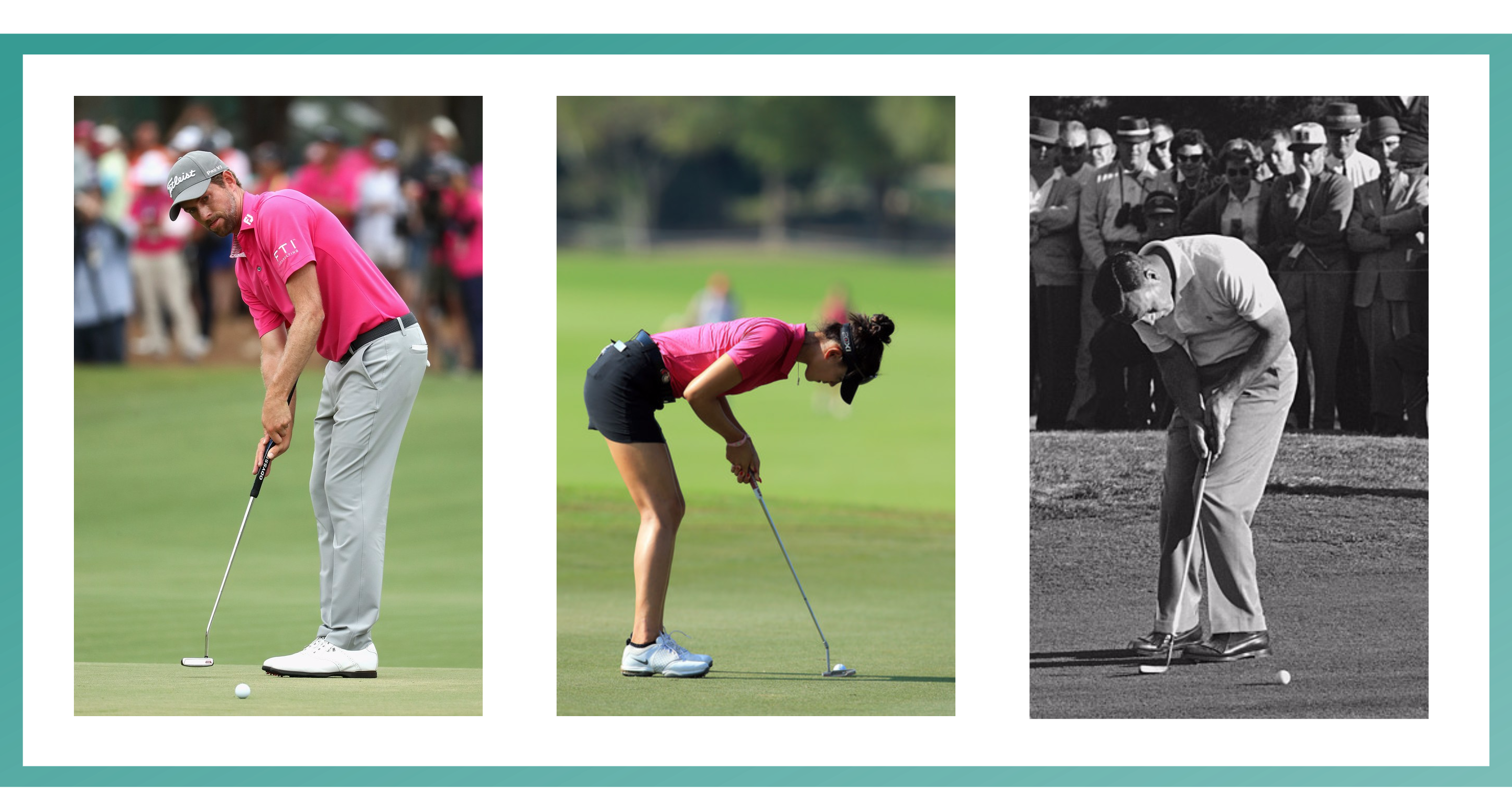SHORT GAME SERIES
ADDRESSING THE BALL
Putting is the area of the game that really separates the elite players from all others. Being productive on the greens will always make a good round great and a poor round manageable. Here we are going to discuss some fundamental address positions.
The Putter
The characteristics of a putter differ a lot from the other clubs in our bag. Therefore we have to approach putts a little differently to how we would approach our and irons and woods.
Here are some of the main differences we see with a putter, which we want to be mindful of when learning about addressing a putt.
Reduced Loft: Putters aren’t flat faced. Most actually have a couple of degrees loft to them.
Upright Lie Angle: The shaft angle of a putter is much more vertical to other clubs in the bag.
Handle/Grip: A putter handle/grip is different to the rounded grips we see on irons or woods. Putter grips will have a flatter surface on the top side.
Address Positions
Putting address positions often vary from player to player. Putting requires a fairly simple technical motion, with more emphasis placed on feel and visualization. As we can see in the images below there are a variety of unique methods to address the ball.

Some of the best putters in the game address the ball differently with regards to posture, stance and grip. There isn’t necessarily a right or wrong way to address a putt. However, there are a few key principles that are important to be a aware of in order to create more consistency on the greens.
Gripping The Putter
There are numerous different grip styles such as such as left-below right, claw and orthodox just to name a few. Choosing a grip style is down to personal preference and what feels most comfortable to the individual player.
You should notice that putter handle is designed differently to an iron. Again there are many different styles of handles available but most have similar design characteristics. The underside of the handle is much more rounded, with a flattened surface on the top.
The grip with a putter is going to differ somewhat to what we use with our irons and woods. So we want to adjust our grip to allow the hands to match the handle design and work as efficiently as possible. Each hand has a primary responsibility and role when making a stroke, which I’ll discuss below.
Lead Hand: The lead hand for most players will be their non-dominant hand. Therefore it’s primary role is to control the club face.
Firstly we want to position the lead hand so the back of the hand is facing the target. This allows us to match the back of the hand to the club face. From here were going to grip the club with the hand placed on the lead side of the handle.
The club is going to sit much more in the crease in the base of the palm, working down the index finger. This will help restrict the amount of wrist movement we have in the stroke, which in turn will give better control over the putt.
Trail Hand: The trail hand’s (often the dominant hand) role is to primarily control the distance and pace at which we hit the putt. This hand position is where we tend to see big differences in the more unorthodox grips.
The trail hand is truly a personal preference, and should be in a position that gives the best feel and response to you.
Eye-Line
The position of your eyes can be a significant influence on how your club works during the stroke, and even more so how you read your putts. This is especially important as we should be constantly reading and feeling the putt, even when we are addressed to the ball.
We want to position our eyes directly over the golf ball. This will encourage a squarer swing path but most importantly it gives you a much more neutral view of the hole and the line of the putt.
If your eye-line is under the ball (between the ball and your toes) there is a chance your putting stroke may work in to out. This can result in pushing putts to the right.
Alternatively if your eye-line is too far over the ball, your stroke may work slightly out to in stroke path. This could produce a steeper angle of attack into the ball which will affect the roll of the ball.
A good drill to check this is to get set-up to the golf ball and drop a ball from the bridge of your nose. A correct position will see the dropped ball land directly on to the ball we have addressed.
Relaxed Arms
Like I’ve mentioned, feel is a important component of putting. In order to establish good feel and control in our putts we want to clear our body of as much tension as possible. Arm position can play a big role in doing this.
Allowing the arms to hang perpendicular to the ground will help relieve tension in the arms and shoulders. This will also create a position that will allow the shoulders to make a good pendulum motion in-swing.
